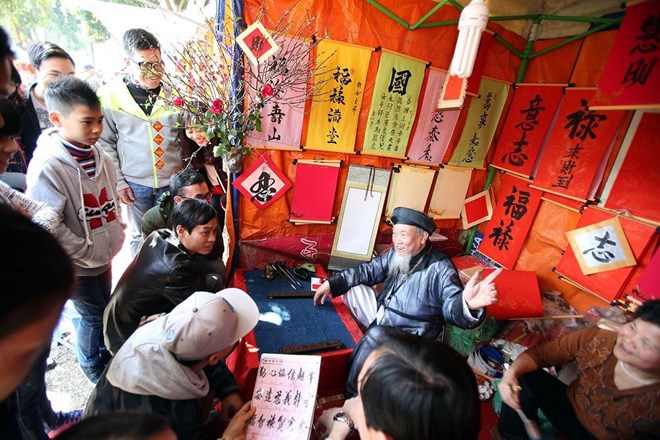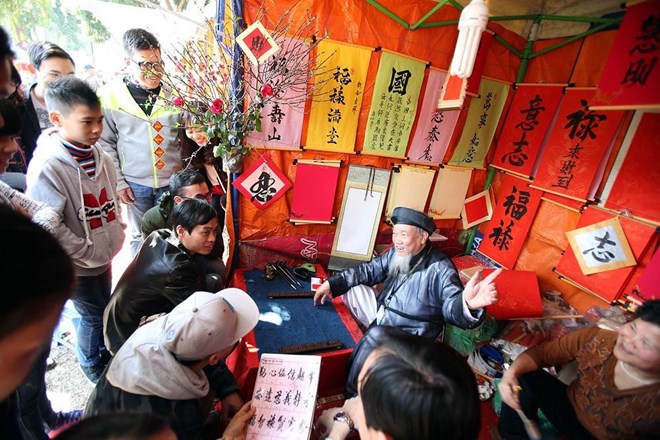



The annual
Spring Calligraphy Festival, underway at Van Mieu – Quoc Tu Giam from February
9-25, is part of a series of events in Hanoi to celebrate Tet festival, the
Vietnamese New Year. Illustrative image. (Photo: ANTD)
Most of the foreign visitors came from China, the Republic of Korea, Japan, the
United States, France, Germany, Australia, Malaysia and Thailand.
The figure brought the total number of visitors to the city during the Tet
holidays from February 14-20 to nearly 375,000, an increase of 13 percent from
the same period last year. The figure included 250,000 domestic travellers, up
6 percent year on year.
The local tourism industry estimated to earn more than 1.28 trillion VND (56.5
million USD) during the biggest holiday of the year, up 19 percent year on
year.
Most visitors flocked to the city’s popular attractions, like Vietnam Museum of
Ethnology, Thang Long Imperial Citadel, Huong Son landscape complex (also known
as the Huong Pagoda), Ngoc Son Temple in the heart of Hoan Kiem Lake, Van Mieu
(the Temple of Literature) and Quoc Tu Giam (the first university in Vietnam)
and the Vietnam National Villages for Ethnic Culture and Tourism, which host a series
of art performances and cultural activities to celebrate the traditional New
Year.
Most notable is the annual Spring Calligraphy Festival which is underway at Van
Mieu – Quoc Tu Giam from February 9-25. About 63 calligraphers sit in bamboo
tents, wearing ao dai (long robes), and perform the writing, following the
traditions of the past.
Most of four- and five-star hotels in Hanoi have cheered the Lunar New Year
festival with a number of special celebration events held for their guests. For
example, the Sofitel Legend Metropole’s Tet Market, also known as "Tet Ha
Thanh”, which recreated a bustling Hanoian market where visitors can enjoy a
range of Tet holiday foods. Other hotels, like Pan Pacific and Apricot, hosted
count-down and New Year’s Eve parties for their stayers.
Source: VNA